Are you curious to know how long it takes to bike 40 miles? The answer depends on various factors, including your age and power. Whether you’re embarking on a biking journey or simply want to challenge yourself, understanding the variables that come into play can help you plan your ride more effectively.
Key Takeaways:
- The average time it takes to bike 40 miles is 3-4 hours for an average cyclist.
- Factors such as age and skill level can affect ride time, with younger and more experienced riders typically completing the distance faster.
- Weather conditions, riding gear, terrain, and bike type are additional factors that can influence ride time.
- Beginners may take longer to complete a 40-mile ride, while advanced riders can finish in under 2 hours.
- A person in the age range of 25-30 with an average cycling speed of 21.7 mph can complete a 40-mile ride in approximately 1.8 hours.
Understanding how these factors impact your ride can help you set realistic goals and make necessary adjustments to optimize your biking experience. So, get ready to pedal and discover the exhilaration of conquering the 40-mile distance.
Factors Affecting Cycling Speed and Time
Several factors can affect how long it takes to bike 40 miles, including your skill level, the weather conditions, the terrain you’re riding on, the type of bike you have, and the gear you’re wearing. These factors can significantly impact your average speed and overall ride time. Let’s explore each of these factors in more detail:
- Skill level: The more experienced and skilled you are as a cyclist, the faster you’ll be able to complete a 40-mile ride. Beginners may take longer to cover the distance, while advanced riders can achieve faster times.
- Weather conditions: Riding in adverse weather conditions, such as strong winds or heavy rain, can slow you down and make it more challenging to maintain a steady pace.
- Terrain: Riding on hilly or uneven terrain requires more effort and can significantly impact your speed. Flat terrain generally allows for faster riding, while uphill sections may slow you down.
- Bike type: The type of bike you’re riding can also influence your speed and ride time. Road bikes, designed for speed and efficiency, are generally faster than hybrid or mountain bikes. The lighter weight and aerodynamic design of road bikes contribute to their speed.
- Riding gear: Wearing appropriate gear, such as padded cycling shorts and a well-fitted helmet, can enhance your comfort and prevent discomfort that may slow you down. Additionally, proper cycling shoes can improve your pedaling efficiency, leading to faster speeds.
By considering these factors and taking steps to optimize them, you can improve your cycling speed and ultimately shorten your ride time. It’s important to remember that everyone’s abilities and circumstances are unique, so these factors may affect individuals differently. Adjusting your training and preparation accordingly can help you achieve your desired ride time.
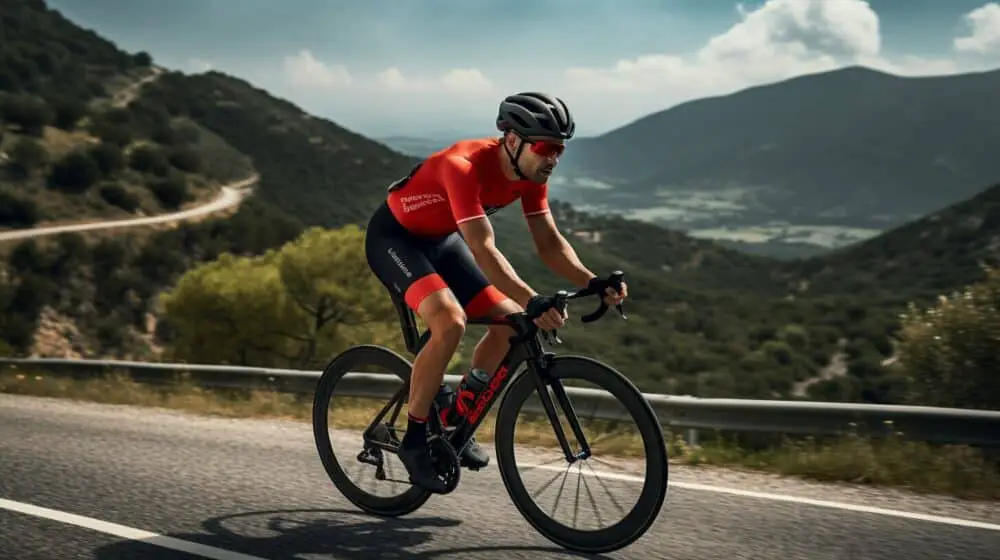
| Age | 20-Mile Ride Time | 50-Mile Ride Time |
|---|---|---|
| 18-25 | 1.5-2 hours | 3.5-4.5 hours |
| 26-35 | 1.6-2.2 hours | 3.8-5.2 hours |
| 36-45 | 1.7-2.3 hours | 4.1-5.6 hours |
| 46-55 | 1.8-2.4 hours | 4.3-5.8 hours |
| 56-65 | 1.9-2.5 hours | 4.6-6 hours |
Average Time to Bike 40 Miles
On average, it takes an average cyclist around 3-4 hours to bike 40 miles, but the type of bike you’re using can also impact your ride time. Factors such as age, skill level, and weather conditions can also affect how long it takes to complete a 40-mile ride. Let’s explore the average times and factors that come into play to give you a better understanding of what to expect on your biking journey.
If you’re riding a hybrid or mountain bike, you may take a bit longer to complete a 40-mile ride compared to someone on a road bike. This is because road bikes are designed for efficiency and speed, with lighter frames and thinner tires. On the other hand, hybrid and mountain bikes are built for versatility and rougher terrain, which can slow you down. However, it’s important to remember that these are generalizations, and individual factors can still make a significant difference in your ride time.
It’s worth noting that the data we’ve mentioned so far represents the average times for an average cyclist. If you’re a beginner or just starting out, it might take you longer to complete a 40-mile ride. It’s essential to build up your endurance and gradually increase your distance over time. On the other hand, more experienced riders who have been consistently training and improving their skills can often complete a 40-mile ride in under 2 hours.

| Age Range | Average Cycling Speed (mph) | Approximate Time to Bike 40 Miles |
|---|---|---|
| 25-30 | 21.7 | Approximately 1.8 hours |
| 31-35 | 20.6 | Approximately 1.9 hours |
| 36-40 | 19.4 | Approximately 2.1 hours |
As mentioned earlier, age also plays a role in ride time. Generally, younger individuals tend to have a higher average speed, allowing them to complete a 40-mile ride more quickly. However, it’s important to remember that individual fitness levels and training can also impact ride time regardless of age. Keeping up with regular training rides and working on improving your power and endurance can help shorten your ride time.
Age and Ride Time
Age plays a role in determining how long it takes to bike 40 miles, with younger cyclists generally completing the distance faster than older ones. As we age, our physical abilities and endurance may decrease, impacting our cycling speed and ride time. However, it’s important to note that individual fitness levels and training can also have a significant impact on ride time, regardless of age.
According to a study conducted by Cycling Analytics, the average cycling speed for individuals in the age range of 25-30 is approximately 21.7 mph. With this average speed, a cyclist in this age group could complete a 40-mile ride in approximately 1.8 hours. This data suggests that younger individuals in their prime cycling years tend to have faster ride times compared to older cyclists.
While age can be a determining factor, it’s essential to remember that ride time is also influenced by various other factors, such as skill level, weather conditions, riding gear, terrain, and bike type. Experienced cyclists who have honed their skills and possess higher levels of fitness may still be able to complete a 40-mile ride in under 2 hours, regardless of age.
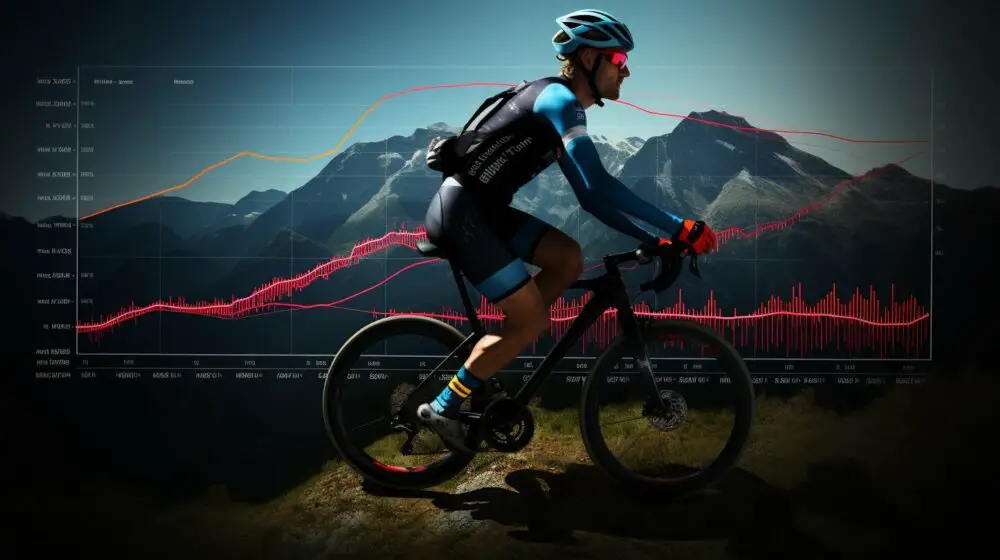
Factors Affecting Ride Time
When considering ride time, it’s crucial to take into account the various factors that can impact cycling speed and overall performance. For example, weather conditions can significantly affect ride time. Headwinds or adverse weather conditions can slow down even the most experienced cyclists, increasing ride time for a 40-mile journey.
| Factor | Description |
|---|---|
| Skill Level | Beginners may need more time to complete the distance compared to experienced riders. |
| Terrain | Hilly or mountainous terrain can increase ride time due to the added effort required. |
| Riding Gear | The type of gear worn, including clothing and helmets, can impact aerodynamics and overall performance. |
| Bike Type | The type of bike used, such as a road bike or a hybrid/mountain bike, can affect speed and ride time. |
By taking these factors into consideration and tailoring their training and preparation accordingly, cyclists can optimize their ride time and enjoy the journey of biking 40 miles.
Power and Ride Time
Your power and fitness level can significantly impact how long it takes to bike 40 miles, and incorporating interval training and improving your cardiovascular fitness can help you increase your power and reduce your ride time. Interval training involves alternating between periods of high intensity and recovery, pushing your body to work harder and build stamina. By challenging yourself with intervals, you can improve your aerobic capacity and increase your power output.
Interval training not only enhances your cardiovascular fitness but also improves your cycling performance. As you become fitter and more powerful, you’ll be able to sustain higher speeds and complete your rides more efficiently. This can lead to shorter ride times when covering longer distances like 40 miles.
In addition to interval training, it’s essential to pay attention to your overall fitness level. Regular cardiovascular exercise, such as cycling, combined with strength training, can improve your endurance, muscle strength, and overall physical fitness. Strengthening your lower body muscles, especially your quadriceps, hamstrings, and glutes, will provide the power and strength necessary for longer rides.
| Average Cycling Speed (mph) | Estimated Time to Complete a 40-Mile Ride | |
|---|---|---|
| Beginner Cyclist | 10-12 | 3.3-4 hours |
| Intermediate Cyclist | 13-16 | 2.5-3 hours |
| Advanced Cyclist | 17+ | 2-2.5 hours |
Remember, these estimated times are based on average speeds and individual ride times may vary. It’s crucial to listen to your body and set achievable goals for yourself. Gradually increase your cycling distance and incorporate interval training into your workout routine to improve your power and ride time over time.
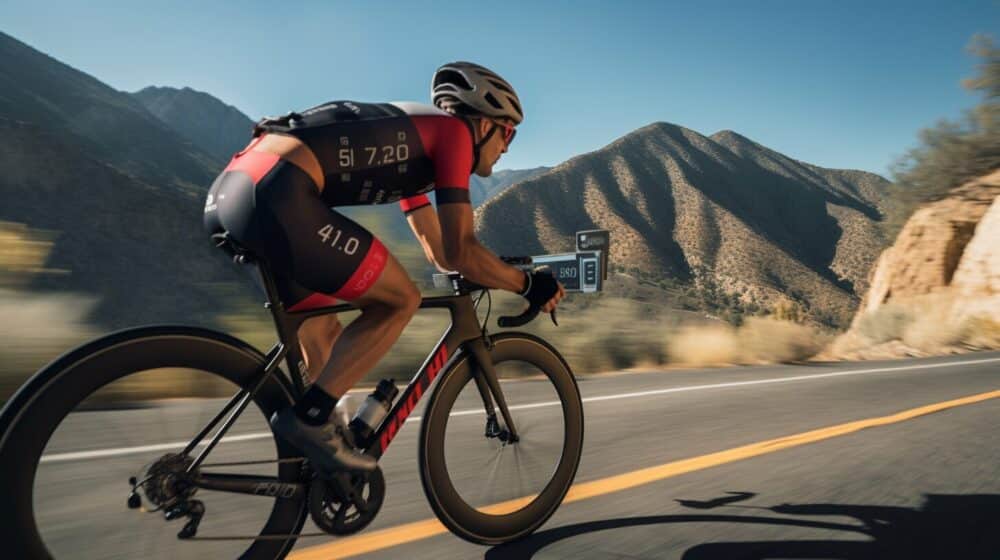
Expert Tips:
- Consult with a professional trainer to develop a personalized interval training plan that suits your fitness level and goals.
- Stay hydrated and fuel your body with proper nutrition before, during, and after your rides to maintain energy levels and maximize performance.
- Invest in quality cycling gear and ensure your bike is properly maintained to optimize your riding experience.
- Consider participating in group rides or joining a cycling club to stay motivated, improve your skills, and learn from experienced riders.
By prioritizing your power and fitness level through interval training and overall conditioning, you can enhance your cycling abilities and conquer the 40-mile journey with confidence and efficiency.
Overcoming Challenges on Long Rides
Long rides come with their fair share of challenges, including extreme heat, hilly terrain, and unpredictable weather conditions. However, with the right strategies and fueling techniques, you can overcome these obstacles and complete the 40-mile journey.
In extreme heat, it’s vital to stay hydrated and avoid overheating. Make sure to drink plenty of water before, during, and after the ride. Wearing lightweight, breathable clothing and using sunscreen can also help protect your skin from the sun’s intense rays. Additionally, consider planning your ride during cooler parts of the day, such as early morning or late afternoon.
Hilly terrain can present a significant physical challenge, but it’s essential to maintain a steady pace and conserve your energy. Shift into a lower gear when climbing and focus on maintaining a consistent cadence. Leaning forward and keeping your weight centered over the bike can also help improve stability while navigating steep inclines.
Unpredictable weather conditions can arise during a long ride, so it’s crucial to be prepared. Check the weather forecast before heading out and dress accordingly. Pack lightweight rain gear in case of sudden showers and consider wearing layers that can be easily added or removed as temperature fluctuates. Don’t forget to protect your electronics and belongings by using waterproof bags or covers.
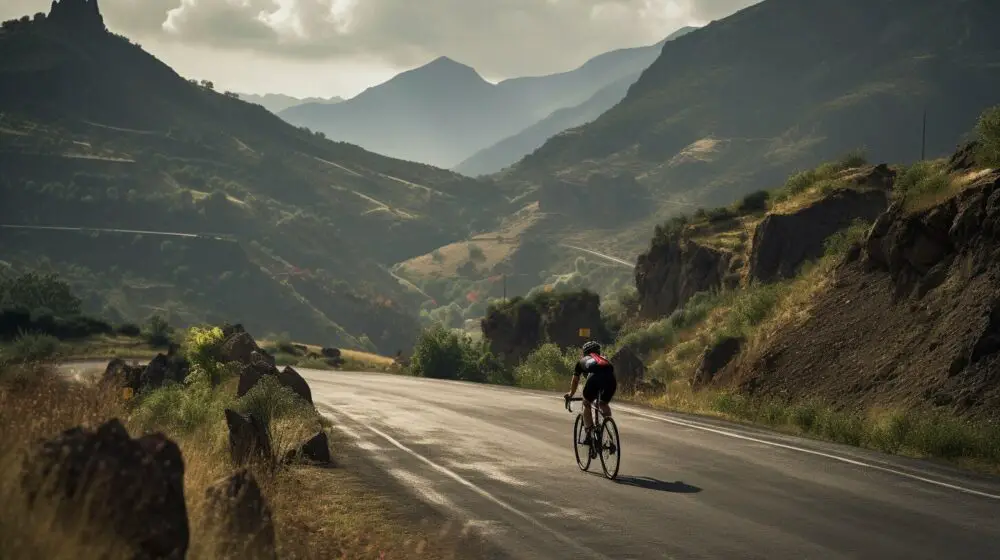
| Challenges | Strategies |
|---|---|
| Extreme heat | – Stay hydrated – Wear lightweight, breathable clothing – Apply sunscreen |
| Hilly terrain | – Maintain a steady pace – Shift into lower gears when climbing – Lean forward for better stability |
| Unpredictable weather | – Check the forecast before the ride – Dress in layers – Pack lightweight rain gear |
By implementing these strategies and taking the necessary precautions, you can conquer the challenges of extreme heat, hilly terrain, and unpredictable weather conditions. Remember to bring along energy bars or other forms of nutrition to fuel your body and maintain energy levels throughout the ride. With determination and proper preparation, you’ll be well-equipped to complete your 40-mile journey and enjoy a rewarding cycling experience.
Training and Preparation
Proper training and preparation are key to successfully completing a 40-mile ride, and this section highlights the importance of regular training rides, maintaining your bike’s condition, following a training plan, and choosing suitable routes.
Firstly, regular training rides are essential to build endurance and improve your cycling performance. Plan your rides in advance and gradually increase the distance to accustom your body to longer distances. Start with shorter rides and gradually work your way up to 40 miles. Incorporate interval training into your rides to improve your cardiovascular fitness and increase your power.
Secondly, it is crucial to ensure your bike is in good condition before embarking on a long ride. Regularly check your tires, brakes, gears, and chain to ensure they are functioning properly. A well-maintained bike will not only enhance your riding experience but also prevent any unexpected issues on the road.
| Training Tips: | Preparation Tips: |
|---|---|
|
|
Follow a structured training plan that includes a combination of endurance rides, speed workouts, and rest days. A well-designed plan will help you build the necessary strength and stamina to complete a 40-mile ride comfortably. It is also important to listen to your body and take sufficient rest to avoid overtraining and injuries.
Choosing suitable routes is another important aspect of training and preparation. Look for routes that offer a mix of terrains, including flat stretches, hills, and descents. Paved paths are ideal for a smooth and enjoyable ride, while off-road trails may require a mountain or hybrid bike. Consider the weather conditions when selecting your route and be prepared for any changes in temperature or unexpected rain showers.
By focusing on training rides, maintaining your bike’s condition, following a training plan, and choosing suitable routes, you will be well-prepared to conquer the challenge of a 40-mile ride. Remember to stay hydrated, fuel your body with proper nutrition, and enjoy the journey as you push your limits and achieve your cycling goals.
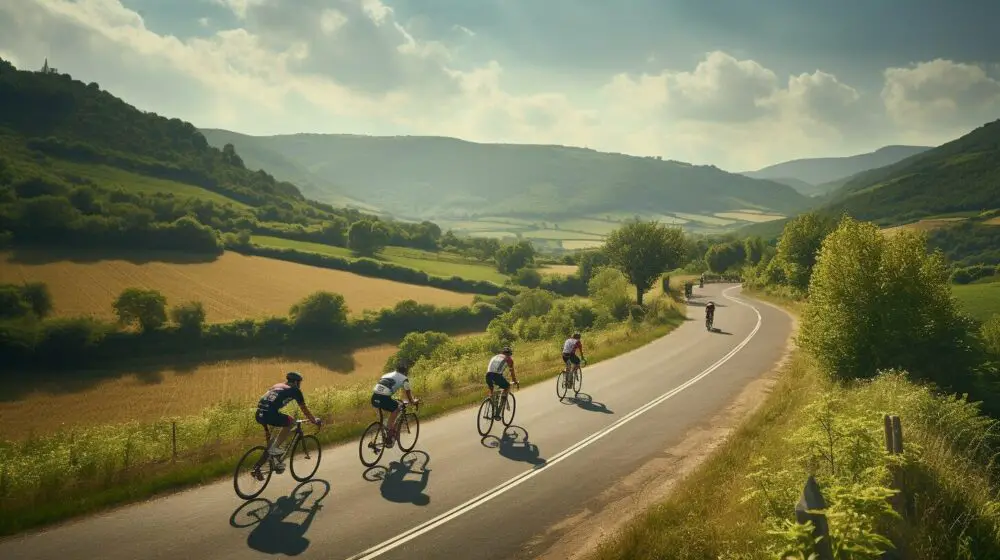
Conclusion
In conclusion, the time it takes to bike 40 miles varies depending on individual factors like age, power, and the challenges faced during the ride. By understanding these factors and adequately preparing, you can embark on your 40-mile biking journey with confidence and enjoyment.
On average, it takes an average cyclist 3-4 hours to bike 40 miles. However, this time can vary based on age and average speed. For example, a person in the age range of 25-30 with an average cycling speed of 21.7 mph can complete a 40-mile ride in approximately 1.8 hours. Beginners may take longer to complete a 40-mile ride, while advanced riders can do it in under 2 hours.
Factors that influence ride time include skill level, weather conditions, riding gear, terrain, and bike type. It’s important to consider these factors when planning your 40-mile biking journey. Beginners may need to allocate more time for breaks and rest, while experienced riders can push their limits and complete the ride at a faster pace.
It’s also worth noting that challenges such as extreme heat, hilly terrain, and unfavorable weather conditions can affect ride time. However, with proper training and preparation, these challenges can be overcome. Regular training rides, maintaining your bike’s condition, following a structured training plan, and selecting suitable routes with paved paths can contribute to a smoother and more enjoyable 40-mile ride.
FAQ
Q: How long does it take to bike 40 miles?
A: On average, it takes an average cyclist 3-4 hours to bike 40 miles. Factors such as age and skill level can influence this time.
Q: What factors affect cycling speed and time?
A: Factors that can affect cycling speed and time include skill level, weather conditions, riding gear, terrain, and bike type.
Q: Can beginners complete a 40-mile ride?
A: Yes, beginners may take longer to complete a 40-mile ride compared to more advanced riders. However, with practice and training, it is achievable.
Q: How long does it take someone in the age range of 25-30 to bike 40 miles?
A: An individual in the age range of 25-30 with an average cycling speed of 21.7 mph can complete a 40-mile ride in approximately 1.8 hours.
Q: How does power and fitness level affect ride time?
A: Power and fitness level play a significant role in ride time. Improving cardiovascular fitness and increasing power through interval training can help shorten ride time.
Q: What are some challenges that may arise on long rides?
A: Challenges such as extreme heat, hilly terrain, and unfavorable weather conditions can affect long rides. Managing energy levels with the help of energy bars is essential.
Q: How can I prepare for a 40-mile ride?
A: Training rides, maintaining your bike’s condition, following a training plan, and selecting suitable routes with paved paths are important steps to prepare for a 40-mile ride.
Q: What is the importance of considering individual factors?
A: Individual factors such as age, power, and skill level should be taken into consideration when determining how long it will take to bike 40 miles. Everyone’s journey is unique!




